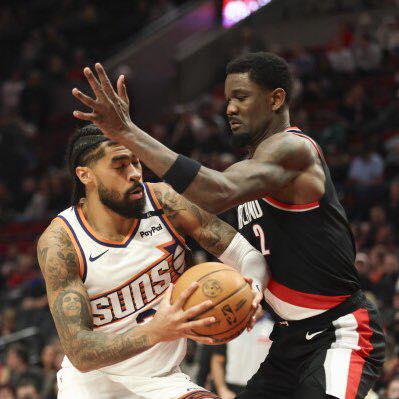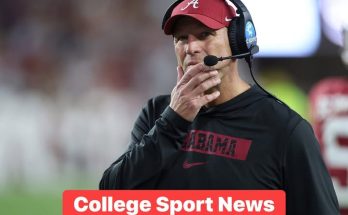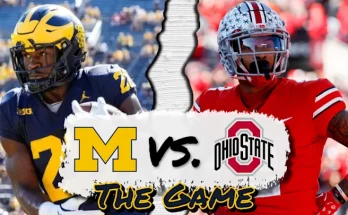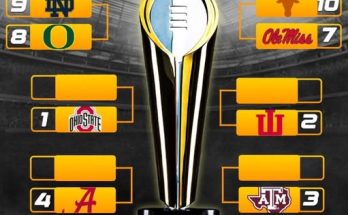The NBA offseason is known for its whirlwind of trades, signings, and rumors that can reshape the league landscape overnight. This summer, however, the buzz surrounding Kevin Durant’s potential trade has reached unprecedented levels, promising to be one of the most complex and far-reaching deals in league history. According to league sources, what started as a straightforward trade discussion between the Houston Rockets and the Phoenix Suns has rapidly expanded into a potential blockbuster involving a staggering seven teams — the Rockets, Suns, Atlanta Hawks, Brooklyn Nets, Golden State Warriors, Los Angeles Lakers, and Minnesota Timberwolves. If completed, this would set a new NBA record for the number of teams involved in a single trade, showcasing just how complicated and interconnected today’s NBA front offices have become.
Kevin Durant, a perennial All-Star and two-time NBA champion, remains one of the most coveted players in the league. His exceptional scoring ability, versatility, and championship pedigree make him a transformative figure for any team fortunate enough to acquire him. The Suns, having missed out on Durant last year and seeking to build a championship-contending roster around Devin Booker and newly acquired Chris Paul, see Durant as a missing piece to vault them into elite status. The Rockets, on the other hand, are looking to reset their franchise after a period of struggle, willing to part with Durant in exchange for a package of young assets, draft picks, and future potential.
At the center of these swirling negotiations, the Suns and Rockets have been in intense discussions, but as the talks have progressed, the scope of the trade has widened considerably. The introduction of the Hawks, Nets, Warriors, Lakers, and Timberwolves to the conversation speaks volumes about the intricacies involved in pulling off a trade of this magnitude. Each team brings a unique set of needs, assets, and strategic goals to the table, creating a multifaceted puzzle that front offices are trying to piece together.
The Atlanta Hawks have been quietly active in trade discussions this offseason. Fresh off a promising playoff run led by Trae Young, the Hawks are eager to improve their roster and address defensive shortcomings. Their inclusion in the Durant trade talks likely revolves around acquiring assets that complement their core or possibly taking on a veteran player with a favorable contract to balance salaries. The Hawks are known for their willingness to be creative in trades, which could make them a pivotal piece in facilitating the multi-team deal.
The Brooklyn Nets’ involvement is no surprise, considering Durant’s past with the franchise. Though Durant’s tenure in Brooklyn ended amid high expectations and internal turmoil, the Nets still have some valuable assets and players on their roster who could be used as trade pieces. Their inclusion could serve to redistribute talent or contracts in a way that benefits multiple teams while adhering to NBA salary cap rules. The Nets have been strategic in reshaping their roster since Durant’s departure, and a well-structured trade could help them continue that process.
Golden State Warriors, another former home of Kevin Durant, bring an interesting dynamic to the talks. The Warriors’ championship window is still open with Stephen Curry, Klay Thompson, and Draymond Green leading the charge, but their roster depth and future flexibility could benefit from a shakeup. Warriors’ involvement might focus on asset exchanges or contract matching that facilitates the larger trade while positioning them for sustained success.
The Los Angeles Lakers, fresh off an offseason marked by high-profile acquisitions and roster changes, could be looking to solidify their lineup with a complementary piece or move contracts to create more salary cap space. Their participation in the Durant deal talks signals that they are eyeing opportunities to maximize their championship potential around LeBron James and Anthony Davis. The Lakers have been no strangers to multi-team trades, making them a likely candidate to act as a key facilitator or beneficiary of this expanded deal.
Lastly, the Minnesota Timberwolves, led by young star Anthony Edwards and perennial All-Star Karl-Anthony Towns, have been aggressive in their pursuit of building a contender. Their inclusion in the Durant trade talks might reflect a desire to acquire additional veteran presence or trade assets that fit their long-term vision. The Timberwolves have demonstrated a willingness to be active in the market, and their role in this potential trade could be crucial in balancing the complex salary and player exchanges involved.
What makes this potential seven-team trade so remarkable is not only the number of teams involved but also the delicate balancing act that must be performed. NBA trades must comply with a host of rules including salary cap regulations, luxury tax implications, player contract lengths, and team needs. When two or three teams negotiate, these elements are already challenging, but when seven teams enter the fray, the complexity multiplies exponentially.
One of the primary challenges in multi-team trades is matching salaries in accordance with the NBA’s Collective Bargaining Agreement. Teams need to ensure that outgoing and incoming salaries are within permissible ranges to avoid penalties or invalidation of the trade. With Durant’s massive contract and the varying salary cap situations of the teams involved, front offices must carefully structure the deal so that all sides meet league requirements.
Moreover, player preferences and no-trade clauses add another layer of complication. While not all players have such clauses, Durant himself is known to have some say in his trade destinations, which influences the viability of the deal. Similarly, teams must consider how the trade will affect locker room chemistry and the long-term plans for their roster construction.
Another factor driving the expansion of the trade talks is the leverage that comes with more teams involved. When multiple franchises negotiate, it creates more options and pathways for assets to flow between organizations. This fluidity can be advantageous, allowing teams to solve multiple roster problems simultaneously. For instance, a team looking to shed salary might find a partner willing to absorb a contract, while that partner receives a young player or draft pick in return. This web of exchanges benefits teams on various fronts, from immediate competitiveness to future flexibility.
The potential impact of this historic trade on the NBA landscape cannot be overstated. Kevin Durant’s move to a new team will undoubtedly alter the balance of power in the league. The Suns acquiring Durant would instantly position them as championship favorites in the Western Conference, boasting a lethal trio alongside Booker and Paul. This acquisition could also shift the competitive dynamics, forcing other Western Conference teams to respond in kind.
For the Rockets, trading Durant signals a clear rebuild or retooling phase, focusing on youth and future assets. The other teams involved will also experience ripple effects, whether through adding key pieces, offloading contracts, or gaining draft capital. The Hawks, Nets, Warriors, Lakers, and Timberwolves all stand to recalibrate their trajectories based on how the trade materializes.
As of now, league insiders emphasize that while talks are intense and ongoing, no final agreement has been reached. The complexity of aligning seven franchises’ interests means that negotiations could stretch over weeks or even months. However, the willingness of these teams to engage in such a large-scale discussion demonstrates a shared ambition to push the boundaries of what’s possible in NBA trades.
This multi-team trade would not only make NBA history by involving seven teams but also highlight the evolving nature of front office strategies. Modern NBA executives increasingly utilize multi-team deals as a tool to creatively manage assets, cap space, and roster needs. The Durant trade saga exemplifies this trend, underscoring how front offices now operate in a hyper-connected environment where collaboration and negotiation extend far beyond bilateral agreements.
For fans, the prospect of this mega-trade offers a thrilling narrative heading into the new season. The NBA offseason is typically a period of speculation and hope, and the Durant trade talks have captivated the basketball world by introducing a level of drama and anticipation rarely seen. Speculation about where Durant will land, who will benefit most, and how the deal will reshape the league will dominate headlines for weeks to come.
the ongoing discussions to expand the Kevin Durant trade from a two-team negotiation between the Rockets and Suns into a groundbreaking seven-team deal involving the Hawks, Nets, Warriors, Lakers, and Timberwolves illustrate the complexity and ambition that define modern NBA transactions. This trade, if completed, would not only alter the fortunes of several franchises but also set a new standard for multi-team deals in professional sports. As front offices continue to navigate the intricate salary cap landscape and player preferences, the basketball world eagerly watches, knowing that the outcome could rewrite the NBA’s competitive script for years ahead. The Kevin Durant trade saga is far from over, but its significance is already etched in the annals of NBA history.



